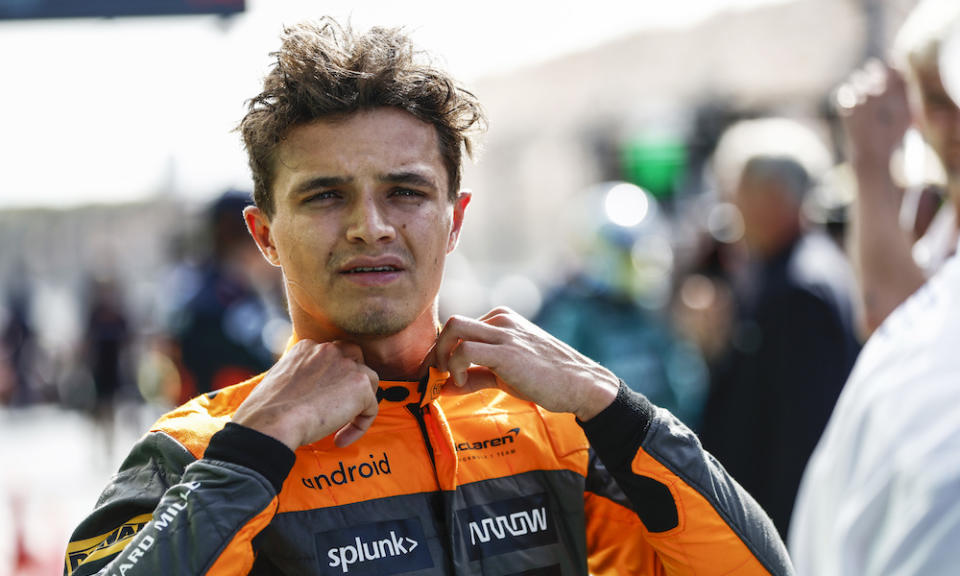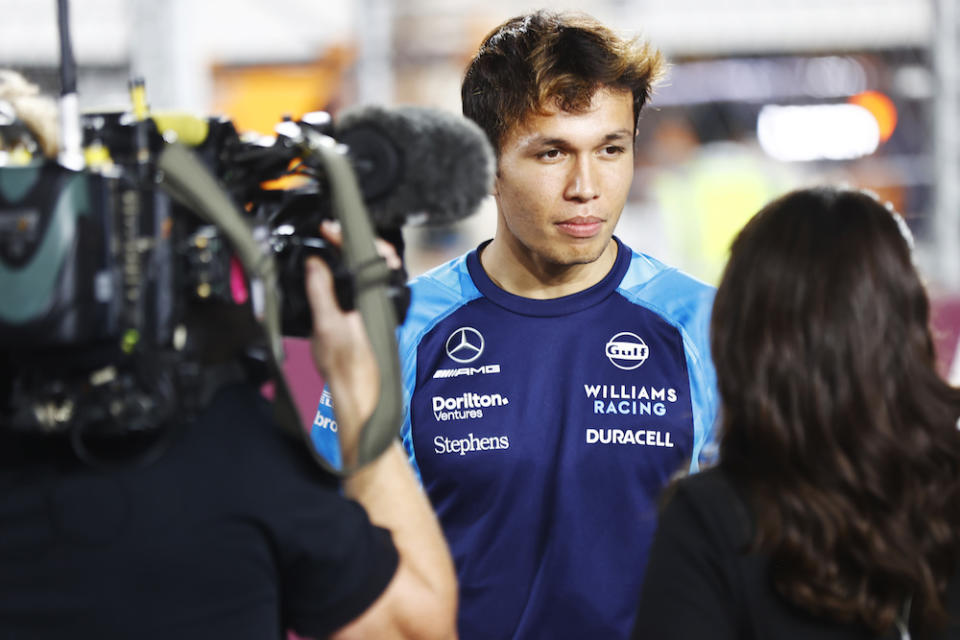Why has F1’s silly season been pushed back to 2025?

There was a time when Formula 1’s driver market was constantly churning. Race seats would be up in the air to the eve of the season, with fans not necessarily certain who might be sitting in the cockpit of one or two of the back-of-the-grid teams until they saw the times from the first free practice session. But as proven by the recent news of Lando Norris signing a new McLaren contract to keep him beyond the end of his previous deal – which didn’t end for another two seasons – the way such dealings work is transformed today.
The obvious comparison is with Ayrton Senna at McLaren 31 years ago. In 1993, he was effectively on a race-by-race deal, being paid a massive $1million for each one, for the first part of the season before eventually committing after much back-and-forth with McLaren. A famously extreme example, admittedly, but it would be inconceivable today for such a situation to arise. What’s more, any short-term driver market intrigue has long since been restricted to what might happen in 2025 given the last remaining driver on the grid for this year was confirmed at the start of December when Williams announced Logan Sargeant would stay on for another season.
This creeping evolution has changed the driver market game beyond all recognition. For the top drivers it’s now profoundly strategic and long-term, with many favouring early moves. That’s exactly what Norris has done, convinced by McLaren’s stellar progress last year and recognizing there isn’t a better alternative. Even a move to Red Bull would likely pitch him against Max Verstappen, likely for 2026 when it will be propelled by a new Ford-assisted in-house power unit. McLaren is as well-placed as any team to emerge as a Red Bull-beater, while locking himself into McLaren well beyond 2025, subject to whatever performance clauses are included allowing him to leave, gives him the stability and certainty he craves.
The landmark deal in this evolving trend for doing your transfer business early was the one taking Fernando Alonso to McLaren for 2007. While it was not surprising that a driver who was taking F1 by storm chose to leave Renault and commit to joining powerhouse McLaren, it was unusual that this agreement was announced in December 2005. It wasn’t unprecedented for options and other such forms of deals to be agreed a long way out, but for it to be signed, sealed and delivered then announced publicly was not common.
The way teams work today has contributed to the desire for more long-term driver market business. Not only is it more important than ever to have continuity given the complexity of the cars and the fact that jumping from car to car is a longer, steeper learning curve than it once was, but also the way commercial packages are put together has become more strategic. Like drivers, big partnership proposals are usually worked on well in advance and it’s hugely beneficial for teams to know exactly what drivers they have to ‘sell’, and for potential sponsors to know they will be getting involved with a team employing a driver or drivers that works for them. There are therefore commercial and technical reasons for the driver market being stretched onto vastly longer timelines than it once was.
For proof of how different this is today, it’s notable that the driver line-up for the season-opening Bahrain Grand Prix will be identical to the one that contested the 2023 season finale in Abu Dhabi. That’s not just in terms of the same 20 drivers participating, but nobody has even moved seats. In addition to the forces that mean teams want stability and long-term certainty, the dearth of opportunities for aspiring drivers thanks to limited testing means it’s extremely difficult for rookies to force themselves into contention.
For 2025, the market pressure is now on drivers who don’t have anything in place for the following year. Broadly speaking, there’s two categories of driver within that group: those who have a choice to make about where they will drive, and the ones who are frantically trying to ensure they stick around in 2025. The leading examples of the former set of drivers are Carlos Sainz and Alex Albon. There’s little doubt both will be on the grid next year as they are the two most in-demand free agents for 2025, but they have a tricky game to play as while they are significant players they aren’t right at the top of the driver tree. And while this season hasn’t even started yet, there are some big decisions to be taken fast.
Currently, Mercedes and McLaren are the only teams to have a complete line-up confirmed for 2025. Ferrari (Charles Leclerc) and Red Bull (Max Verstappen) have their de facto team leaders locked in place, meaning there are only two seats among the top four teams in last year’s constructors’ championship vacant. Sainz is in a fascinating position as he currently holds the Ferrari seat. He wants to stay and Ferrari appears to want to keep him, but where they differ is about the length of the contract. Given Red Bull is usually a closed driver ecosystem, that means any alternatives for Sainz that are useable both as leverage and as a fallback represent a drop down the grid. Ferrari can afford to sit back and wait in the hope he commits, knowing that if he doesn’t there’s an ideal alternative in Albon. As for Albon, that puts him in a strong position because he can afford to wait, considering he is much in demand following his outstanding performances for Williams of late.

Albon’s rising stock puts him into a strong position when the driver market starts to open up again. Andy Hone/Motorsport Images
The whole driver market for 2025 likely must wait for this situation to be resolved. That underlines why it’s preferable to get decisions made early because when things do run late, which today means any point in the year a contract expires, it can get complicated and the chances of a driver or team losing out in the game of musical chairs increases significantly.
For proof of what can go wrong, just look to Fernando Alonso. He’s been one of F1’s best drivers throughout his career yet hasn’t been in a car capable of winning on merit for a decade. Now 41, he underlines that a career can seem very short when you are chasing a chance in frontrunning machinery. Moves that appear golden on paper can backfire badly and that’s something drivers have to be cautious about.
However, it’s only the most in-demand drivers, of which Norris is one, who have the luxury of being able to play the driver market strategically and even those that do are subject to the vagaries of circumstances outside of their control. The best example of that is anyone who counted on a Mercedes seat being available by now given Lewis Hamilton’s possible retirement has been a talking point for several years, and will continue to be despite him being under contract to the end of 2025.
The further you work your way ‘down’ the driver market, the more fraught it becomes. There’s a strata with drivers such as Esteban Ocon, out of contract at the end of the year, who will certainly be on the grid next year but likely only have a choice of options midfield and below. Then there’s those who are fighting tooth and nail to hang on, for example the experienced Valtteri Bottas, who will be nervously eyeing the Sauber team’s courting of multiple drivers, including Sainz, Albon and Ocon, as he bids to extend his career. And if he has to move, options will be limited.
There’s also upward pressure from those bidding to make their way in. Andrea Kimi Antonelli is the current anointed future superstar and steps up to Formula 2 this year, meaning he could conceivably be a factor in the 2025 driver market should he excel in his rookie year. He’s in the rare position of having a more strategic potential pathway and it’s conceivable to see him following the George Russell route with a few years at a team like Williams prior to a promotion to Mercedes – provided, of course, he delivers as expected. Then there’s his Prema team-mate Ollie Bearman, recently-confirmed as a Ferrari reserve and with mileage for Haas under his belt, as well as a host of F1-aligned prospects up against both of them.
All of this adds up to a fascinating landscape, with teams and drivers jostling for the best drives and pay packets. And as Alonso reminded us in 2021 when he signed for Aston Martin, there’s always the possibility of a thunderbolt striking and changing everything. That’s when the best-laid plans can become untangled.
The driver market never really sleeps, but it does ebb and flow. And while Norris’s new deal has calmed one part of the pool, the number of unanswered questions for 2025 and beyond means it won’t be long before the waters become tempestuous again.
Those with their long-term futures settled can therefore sit back, relax and start plotting their next big contract.

 Yahoo Autos
Yahoo Autos 